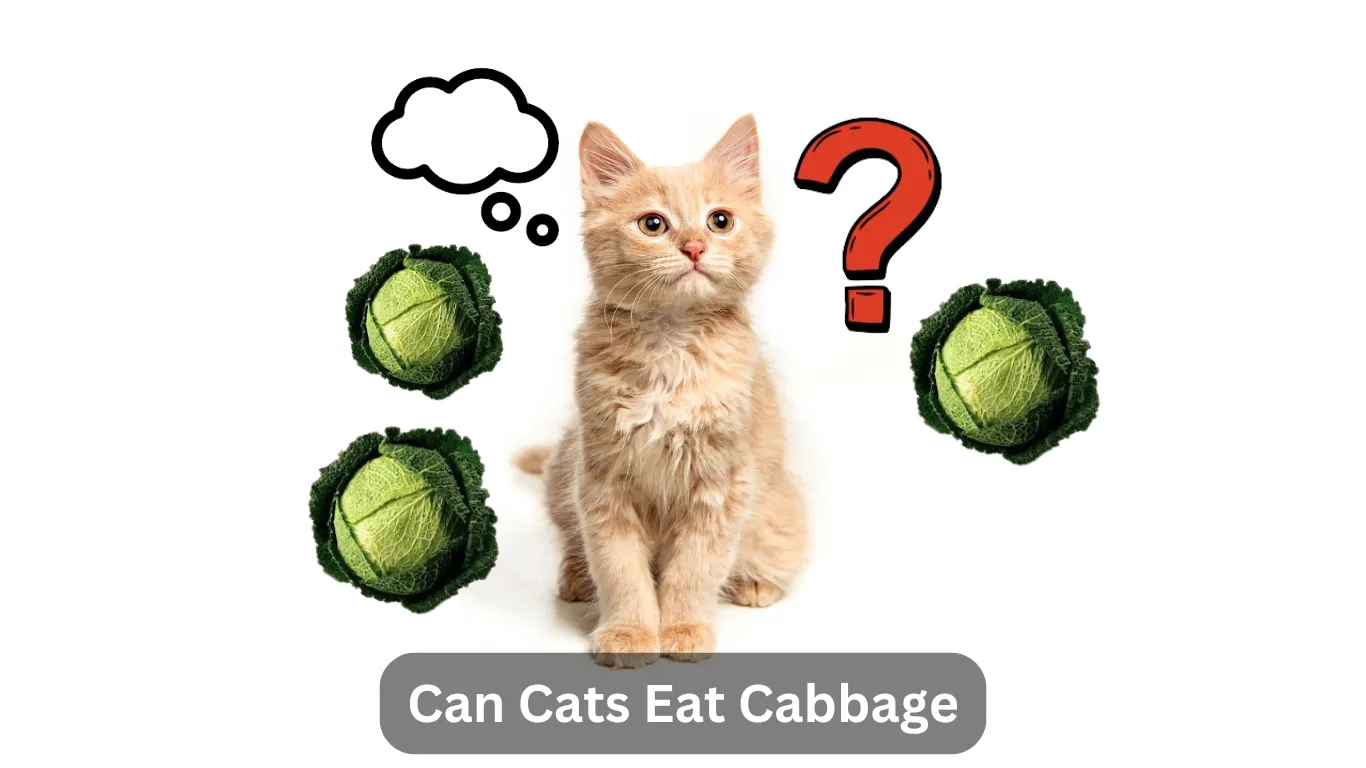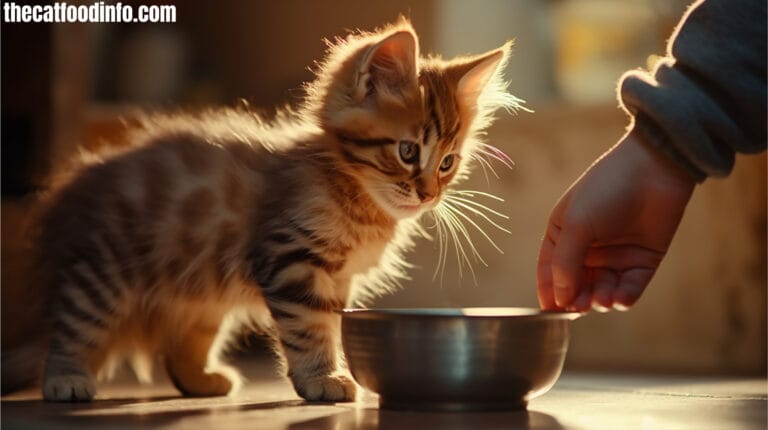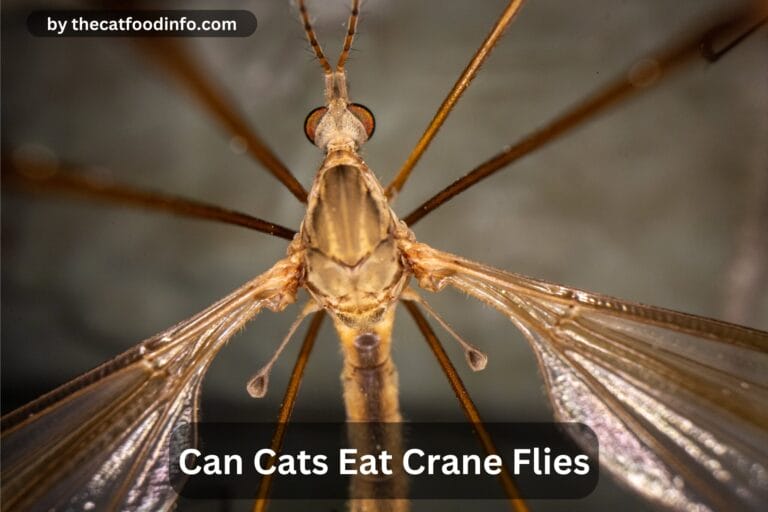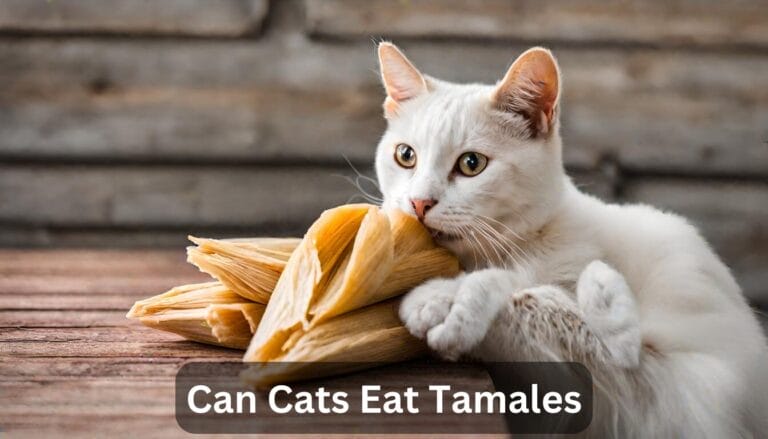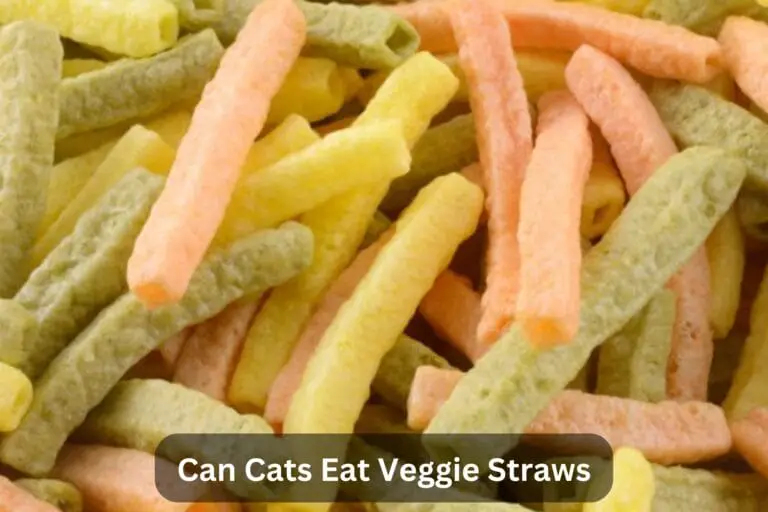Can Cats Eat Cabbage? Find Out Now
The question “Can cats eat cabbage?” may arise in the minds of cat owners who share their food with cats. If you are one of them and worried about it, don’t worry because
In this comprehensive and detailed guide, we are going to talk about cats and cabbage and its health impacts ( benefits and risks ) on cats. Along with this, we will also discuss more relevant questions to cats and cabbage such as “ How much cabbage can you give your cat? “ and “ What to do if your cat overeats cabbage? “ So let’s get started.
Nutritional Contents Of Cabbage
| Nutrients | Amount in 100 grams |
| Total Carbohydrate | 6 g |
| Protein | 1.3 g |
| Fat | 0.1 g |
| Cholesterol | 0 mg |
| Vitamin B-6 | 0.1 mg |
| Magnesium | 12 mg |
| Sodium | 18 mg |
| Vitamin C | 36.6 mg |
| Iron | 0.5 mg |
| Calcium | 40 mg |
| Potassium | 170 mg |
Can Cats Eat Cabbage?
Yes, cats can eat small amounts of cabbage. However, it is not an important part of their natural diet. It’s okay to offer cabbage occasionally as a treat, but too much can upset their stomach. Always monitor your cat’s reaction to new foods and consult your vet if you are unsure about dietary changes.
Is Cabbage Good For Cats?
No, while cats can eat small amounts of cabbage, it is not necessarily “good” for cats. Cabbage lacks essential nutrients that cats need to thrive, so it should not be a regular part of their diet. Introduce cabbage carefully and in moderation, but focus on feeding your cat a balanced diet based on their nutritional needs.
Health Benefits Of Cabbage For Cats
Here are some potential health benefits of cabbage for cats, presented in easy-to-understand terms:
1: Hydration Support:
Cabbage is high in water content, which can help keep your cat hydrated, especially if she doesn’t drink enough water herself. Hydration is vital for overall health and can help with digestive and kidney function.
2: Dietary Fiber:
Cabbage contains dietary fiber, which can promote healthy digestion in cats. Fiber helps regulate bowel movements, prevent constipation, and promote regularity. It can also contribute to the feeling of fullness, which can help overweight cats feel satisfied with smaller portions.
3: Antioxidant Properties:
Cabbage contains antioxidants like vitamin C and beta-carotene, which can help boost your cat’s immune system and protect against cell damage caused by free radicals. A strong immune system can help your cat fight diseases and infections.
4: Nutrient Boost:
Although not a primary source of nutrition for cats, cabbage contains some vitamins and minerals that can supplement their diet. These may include vitamin K, vitamin B6, manganese, and folate. Adding various nutritious foods to your cat’s diet can help with their overall health and well-being.
5: Weight Management:
Because of its low-calorie content and high water and fiber content, cauliflower can be a beneficial addition to a weight management diet for overweight cats. This can help them support weight loss or maintenance efforts, without consuming too many calories.
Remember, cabbage may offer these potential health benefits, but it should only be given to cats in small amounts and as an occasional treat. Too much cabbage can cause indigestion.
Health Risks Of Cabbage For Cats
Here are some potential health risks of cabbage for cats, explained in simple terms and presented in separate headings:
1: Digestive Upset:
Cabbage contains compounds that may be difficult for some cats to digest, leading to gastrointestinal problems such as gas, bloating, or diarrhea. Introducing cabbage too early or in large amounts can upset your cat’s stomach and cause discomfort.
2: Thyroid Interference:
Cabbage belongs to the family of vegetables that contain substances called goitrogens. These substances have the potential to disrupt thyroid activity in some cats, potentially resulting in thyroid complications when used in excess over a long time. Cats with thyroid problems should avoid consuming large amounts of cabbage.
3: Allergic Reactions:
Some cats may be allergic to cabbage or certain compounds found in it. Allergic reactions may manifest as skin irritation, itching, vomiting, or diarrhea. If you notice any unusual symptoms after feeding your cat cabbage, stop feeding and consult your veterinarian.
4: Risk of Choking or Obstruction:
Raw cabbage, especially when not cut into small pieces, can be a choking hazard for cats. Additionally, large pieces of cabbage or the tough, fibrous stalks can potentially cause gastrointestinal obstruction if ingested. Always make sure that cabbage is prepared safely for your cat to consume.
5: Pesticide Residue:
If not grown organically, cabbage may contain pesticide residues that can be harmful to your cat if eaten. Washing cabbage thoroughly before feeding it to your cat can help reduce this risk, but it’s important to be careful when offering non-organic products to your pet.
Remember, cabbage may offer some potential health benefits, but it’s important to keep these risks in mind and introduce them into your cat’s diet carefully.
How Much Cabbage Can I Give My Cat?
Determining how much cabbage to give your cat depends on several factors, including your cat’s size, age, and individual tolerance to new foods. As a general guideline, cabbage should only make up a small portion of your cat’s diet, ideally no more than 10 percent of their total diet. For most cats, a small, bite-sized piece of cooked or raw cabbage as an occasional treat is sufficient. However, you must monitor your cat’s response to cabbage and adjust the amount accordingly. If your cat experiences digestive upset or an adverse reaction, stop feeding cabbage and consult your veterinarian for guidance.
What To Do If Your Cat Overeats Cabbage?
If your cat eats a lot of cabbage, it’s important to monitor them closely for signs of digestive distress or adverse reactions. Provide plenty of fresh water to flush their system and aid digestion. Consider withholding food for a while to give their stomach a chance to heal, but make sure they have access to water at all times. If your cat shows signs of distress such as vomiting, diarrhea, or lethargy, contact your veterinarian immediately for guidance and possible treatment. In the future, be extra careful with portions of cabbage and make sure your cat’s diet is balanced and appropriate for their nutritional needs.
Cabbage Allergic Reaction Symptoms In Cats
Here’s a breakdown of cabbage allergic reaction symptoms in cats, explained in simple terms and organized into separate headings:
1: Skin Irritations:
Cats may develop skin problems such as itching, redness, or inflammation after exposure to cabbage. You may notice that your cat is scratching excessively or licking its fur more than usual. Certain compounds in cabbage can cause skin irritation due to an allergic reaction.
2: Gastrointestinal Distress:
Digestive problems such as vomiting and diarrhea are common symptoms of an allergic reaction to cabbage in cats. These symptoms may develop immediately after ingestion and may persist for some time. Gastrointestinal discomfort may result from the body’s immune response to cabbage protein or other allergens.
3: Respiratory Problems:
Some cats may experience respiratory symptoms if they are allergic to cabbage. This may include coughing, wheezing, sneezing, or difficulty breathing. Respiratory problems usually occur when allergens in cabbage are inhaled or come into contact with the mucous membranes of the respiratory tract.
4: Behavioral Changes:
Allergic reactions can sometimes manifest as changes in behavior. Your cat may appear restless, agitated, or unusually lethargic after eating cabbage. Changes in behavior may be a sign of discomfort or discomfort caused by an allergic reaction to cabbage.
5: Swelling or Hives:
In severe cases, cats may develop hives or rashes along with swelling of the face, lips, or tongue. Swelling may be accompanied by pain or discomfort and may indicate a more serious allergic reaction that requires immediate veterinary attention.
If you suspect that your cat is experiencing an allergic reaction to cabbage or any other food, it is important to seek veterinary advice immediately. Your veterinarian can provide guidance on managing your cat’s symptoms and recommend allergy testing to identify specific triggers. In the meantime, avoid feeding your cat cabbage and monitor them closely for any worsening symptoms.
How To Prevent Your Cat From Eating Cabbage?
Here’s a detailed guide on how to prevent your cat from eating cabbage, explained in simple terms and organized into separate headings:
1: Secure Food Storage:
Store cabbage and other vegetables in sealed containers or in the refrigerator where your cat can’t access them. Cats are curious creatures and may investigate or try to get their hands on food left on countertops or tables.
2: Monitor Meal Preparation:
Be aware of your cat’s presence when preparing cabbage food. Keep your cat out of the kitchen or in a separate room to avoid masking flavors while cooking.
3: Offer Suitable Alternatives:
Provide your cat with a variety of appropriate foods and snacks to satisfy their cravings without resorting to kibble. Choose cat-friendly snacks such as commercial cat food or small pieces of cooked meat or fish.
4: Distract with Toys or Play:
Keep your cat engaged with interactive toys or play sessions and keep their attention away from cabbage and other potential hazards in the house. Engaging your cat in play can help satisfy their natural hunting instincts and prevent snacking out of boredom.
5: Create Physical Barriers:
If your cat is particularly persistent or determined to access the cabbage, consider creating physical barriers to prevent it from reaching it. Use baby gates or pet-proofing devices to limit access to areas where cabbage is stored or prepared.
6: Training and Positive Reinforcement:
Train your cat to avoid cabbage using positive reinforcement techniques. Offer praise, treats, or rewards when your cat ignores the cabbage or follows commands to stay away from it. Consistent training can help reinforce desired behaviors over time.
7: Supervise Outdoor Access:
If your cat spends time outside, monitor its activity so it doesn’t forage on cabbage or other potentially harmful plants in the garden. Consider creating a cat-friendly outdoor space with safe plants and landscape features.
By implementing these strategies, you can help reduce the risk of your cat eating cabbage and ensure their safety and well-being. Always be proactive in creating a cat-friendly environment and providing suitable alternatives to meet your cat’s instincts and dietary preferences.
How Do You Prepare Cabbage For Cats To Eat?
Here’s a detailed guide on how to prepare cabbage for cat food, explained in simple terms and organized under separate headings:
1: Selection of Cabbage:
Choose fresh cabbage that is free of bruises, blemishes, or signs of spoilage. Choose organic cabbage when possible to reduce the risk of pesticide residues. Green cabbage is generally well tolerated by cats, but you can also try varieties like red or savoy cabbage in moderation.
2: Washing the Cabbage:
Rinse the cabbage thoroughly under cold running water to remove any dirt, debris, or pesticide residue. Gently pat the cabbage with a clean towel or paper towel to remove excess moisture.
3: Cutting or Shredding:
Cut or shred the cabbage into small, bite-sized pieces based on your cat’s size and eating habits. Remove the tough outer leaves and core, as these parts can be difficult for your cat to chew and digest. Aim for pieces that are easy to chew and swallow.
4: Cooking Options:
Consider cooking cabbage before serving it to your cat, as this can make it easier to digest and increase its palatability. You can steam, boil, or lightly fry cabbage without adding any spices or oil. Avoid using butter, salt, or other ingredients that may be harmful to your cat.
5: Cooling the Cabbage:
Allow the cooked cabbage to cool to room temperature before serving it to your cat. Hot foods can cause burning or discomfort, so it’s important to make sure cabbage is safe for your cat to eat.
6: Offering in Moderation:
Add cabbage to your cat’s diet slowly and in small amounts to gauge their tolerance and preferences. Start with a small piece and observe your cat’s reaction before offering more. Monitor your cat for signs of digestive upset or adverse reactions after consuming cabbage.
7: Mixing with Regular Food:
Add a small amount of cooked cabbage to your cat’s regular food to encourage acceptance and prevent indigestion. Gradually increase the ratio of cabbage over time if your cat responds positively and tolerates it well.
By following these steps, you can safely prepare cabbage for your cat and add it to their diet as an occasional treat or as a supplement to their regular meals.
Can Cats Eat Cabbage Raw?
Yes, cats can eat cabbage raw. However, it is important to introduce it slowly and in small amounts so as not to upset digestion. Monitor your cat for any signs of distress after eating raw cabbage and consult your veterinarian if you have concerns.
Can Cats Eat Red Cabbage?
The answer is yes, cats can eat red cabbage. However, as with any new food, it’s important to introduce it slowly and monitor your cat for any adverse reactions. Red cabbage is safe for cats to eat in small amounts, but it should not be a major part of their diet. Always consult your veterinarian if you have any concerns about your cat’s diet or health.
What Are The Other Best Vegetables To Give A Cat?
Some other best vegetables to give a cat are explained in simple terms:
1. Cooked Carrots:
Carrots are rich in beta-carotene and fiber, which promote digestive health and support vision. Cooked carrots are easier for cats to digest than raw carrots and can be offered in small amounts as a tasty and nutritious treat.
2. Steamed Broccoli:
Broccoli is full of vitamins and minerals, including vitamin C, vitamin K, and folate. Steamed broccoli is a safe option for cats, but must be cut into small, bite-sized pieces to prevent choking hazards. Gradually introduce broccoli to your cat’s diet and carefully observe their response.
3. Cooked Green Beans:
Green beans are low in calories and high in fiber, making them ideal for overweight cats or those with digestive issues. Cooked green beans can be served plain or mixed with your cat’s regular food as a healthy and satisfying addition to their diet.
4. Steamed Spinach:
Spinach contains nutrients like iron, calcium, and vitamins A and K, which can benefit your cat’s overall health. Cooked spinach is easier for cats to digest than raw spinach and can be offered as an occasional nutritious treat. Refrain from using spices or sauces that could pose a risk to your cat’s health.
5. Cooked Squash:
Squash varieties such as pumpkin or butternut squash are rich in fiber and essential nutrients such as vitamin A and potassium. Cooked squash can be pureed and mixed with your cat’s food to provide more moisture and dietary fiber. Start with a small amount to make sure your cat tolerates it well.
6. Peas:
Peas are a good source of protein, fiber, and vitamins for cats. Frozen peas can be thawed and served as a healthy snack, or mixed with your cat’s food for added texture and flavor. Be sure to remove any outer fur or shell that may be difficult for your cat to chew.
7. Zucchini:
Zucchini is low in calories and rich in vitamins C and K, making it a nutritious option for cats. Cooked or steamed zucchini can be cut into small pieces and served as a tasty treat for a tasty variety or mixed with your cat’s regular food. Avoid cooking or cooking oils that can upset your cat’s stomach.
These vegetables can be a healthy addition to your cat’s diet when served in moderation and prepared properly.
Conclusion
Finally, although cats can eat cabbage in small amounts, it must be approached with caution. Cabbage offers some potential health benefits, including hydration support, dietary fiber, and antioxidant properties, but it also carries risks such as digestive upset and allergic reactions. It is important to introduce cabbage slowly and closely monitor your cat’s response. Additionally, other vegetables such as cooked carrots, steamed broccoli, and peas can provide nutritious alternatives for your friend. Always prioritize your cat’s health by consulting a veterinarian before making major dietary changes, and remember to offer a balanced diet tailored to your cat’s specific needs. By understanding the benefits and risks associated with cabbage and other vegetables, you can ensure that your cat stays happy, healthy, and thriving.
FAQs
Can Cats Eat Cabbage Soup?
Yes, cats can eat cabbage soup, but it’s important to make sure it doesn’t contain ingredients that are harmful to them, such as onions or garlic. Additionally, cabbage soup should only be given to cats in small amounts as an occasional treat.
Do Cats Like Cabbage?
Cats may or may not like cabbage, as preferences vary among individuals. It’s important to monitor your cat’s response to cabbage and offer small amounts as a treat if they show interest.
Can Cabbage Cause Digestion Problems In Cats?
Yes, cabbage can cause digestive problems in some cats if eaten in large amounts or if they are allergic to it. It’s best to introduce cabbage slowly and monitor your cat for signs of digestive upset.
Is Cabbage Safe For Pets?
Yes, cabbage is generally safe for pets, including cats, when given in moderation. However, it is important to monitor for any adverse reactions and avoid overfeeding them.

